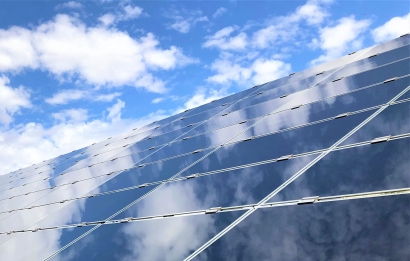
Less developed countries view renewable energy installation and reliance as part of the industrialization process. They can easily adopt energy-efficient technology, compatible with renewable power, because of its previous establishment. Residents also find employment, reduced energy costs, power security and more from the industry, along with additional benefits.
Over 800 million individuals globally live without access to electricity. Medical laboratories, hospitals, health clinics, surgery blocks and maternity centers rely on power. Without it, these facilities have limited use of lights, refrigeration for medicine and power-driven medical equipment.
Unreliable or absent power sources have significant consequences. After reviewing the downfalls, the United Nations developed the Solar for Health initiative. The program installs photovoltaic solar panel systems in developing countries' health centers.
Solar medical centers also reduce the cost of health programs, providing universal access. The Zambia United Nations Development Program could help facilities save up to 40%. Over time, solar-driven savings can have significant impacts.
As the climate changes, the frequency of flooding events increases. Professionals view a rise in precipitation and hurricane intensity globally, regardless of development. Some regions experience consistent flooding, degrading populated areas and generating $1 billion in damage annually.
Harsh hurricane seasons may jeopardize a developing nation's citizen safety and property security. Storms cause power outages, leaving individuals unable to reach medical professionals or utilize sump pumps for flood reduction. Some countries use solar generators, aiding in storm relief.
The U.S. helped Puerto Rico install solar generators on a hurricane-ridden island called Culebra. It distributed $4.1 million in grant funding to the island, and Puerto Rico contributed an additional $1 million. It installed a renewable power microgrid with the funds.
The renewable energy microgrid is more resilient than the island's conventional power source. It provides consistent electricity throughout the island even after significant weather patterns. The local, state and federal partnership helped the U.S. and Puerto Rico fund relief efforts during Hurricanes Maria and Irma.
Nicaragua generated 54% of its total energy use from renewable sources before June of 2015. It plans to continue clean energy development, creating 90% of its energy from nondepletable sources in the future. The country utilizes geothermal, wind and solar power to meet local demands.
Renewable energy installation significantly shrank Nicaragua's carbon footprint and lowered electricity costs. Onshore wind and solar power recently fell below 5 cents per kilowatt-hour. Fossil fuel-generated power reaches up to 18 cents per kilowatt-hour.
The 13-cent reduction in price makes renewable energy the most affordable power source on the market. Developing countries can save significant funds by adopting clean energy. It will continuously drop over time, making it more affordable and accessible for all.
The renewable revolution also aids in educational development. A school in Nepal began using a solar water heater in 1978, and it still utilizes renewably driven technology today.
Before the device's installation, students had limited access to electricity. Renewable power solved this limitation, creating a safe and clean school for local students. Solar water heaters offer resource availability and stability to individuals around the world, regardless of their surroundings.
Many developing countries rely on local resources to sustain residential longevity. Nonrenewable energy sources can pollute these elements, causing adverse health effects. Oil spills pollute local food sources like fish and vegetation by the coast.
When marine species encounter oil spills, they face deformation and death. The BP disaster killed nearly 5 million larval fish, threatening local food supplies. Other spills pose health dangers in developing Central and South American countries.
Developed countries can learn a thing or two from renewably driven nations. The climate crisis prompts various government officials to comply with the Paris Agreement and improve the planet’s health. They may evaluate developing nations' renewable energy use and match their efforts.

